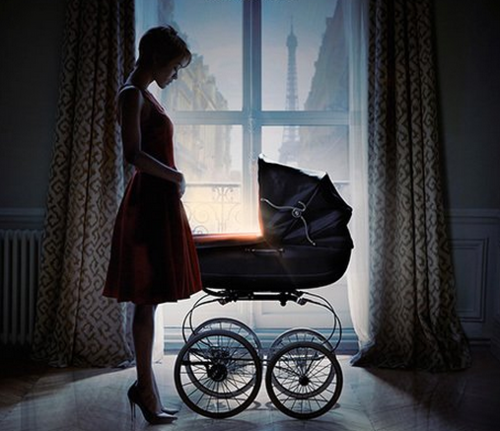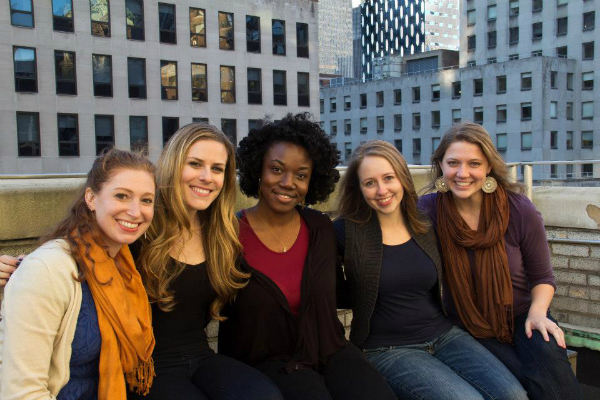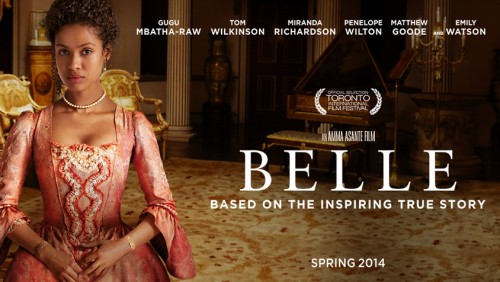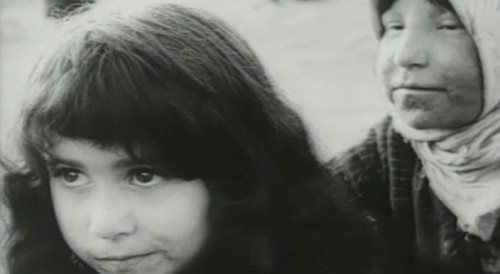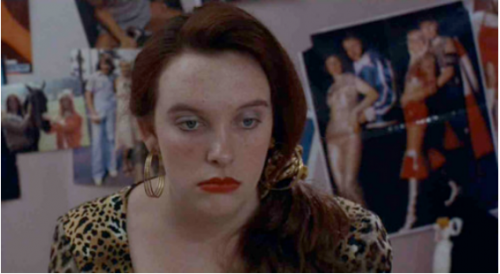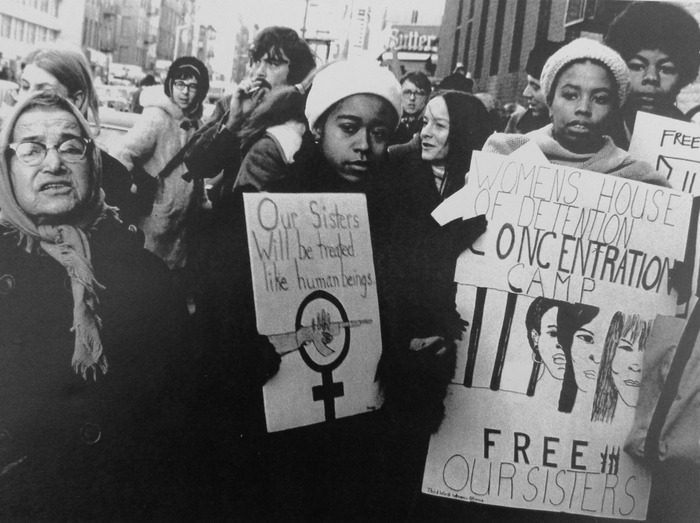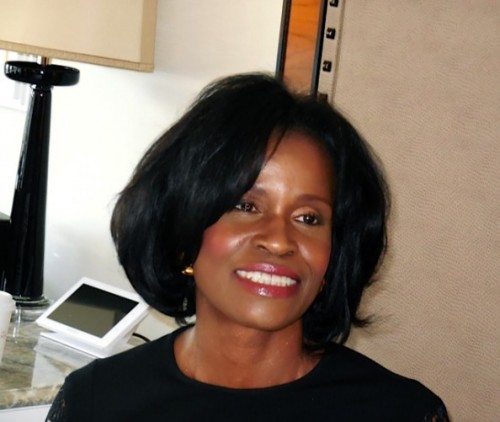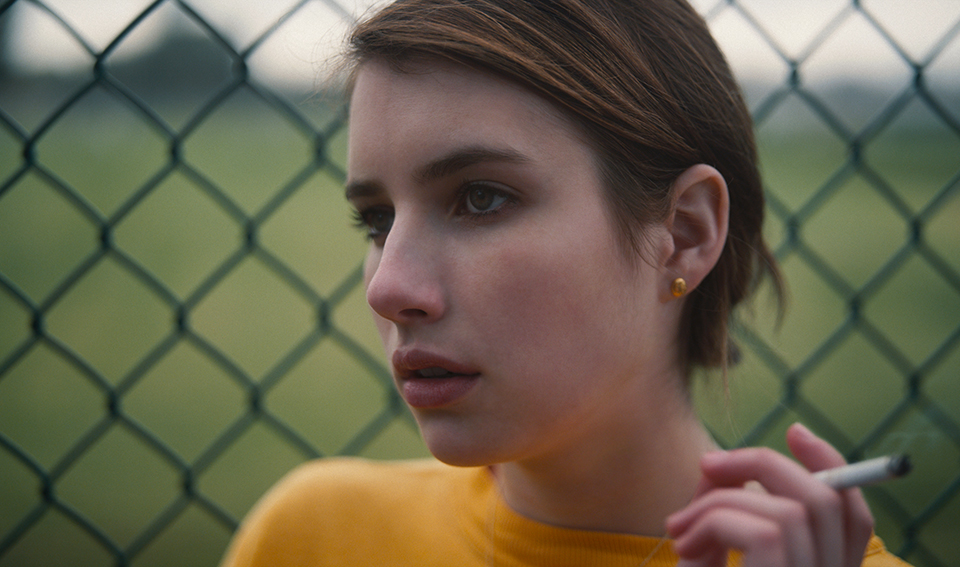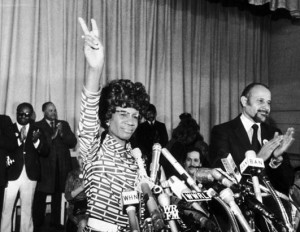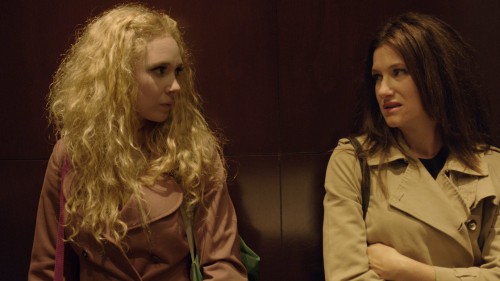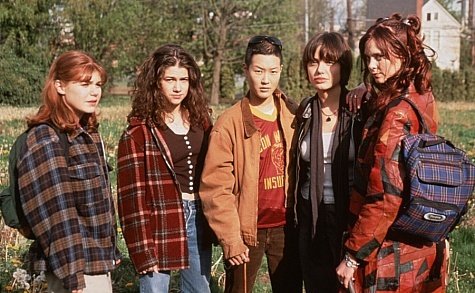
On one hand, the rational behind NBC’s two-night miniseries of Rosemary’s Baby is clear. Take a best-selling event novel, the type everyone was reading and talking about at dinner parties in 1967, and make it into event television. Along with the network’s recent live production of The Sound of Music and upcoming live musicals and limited series on the other networks, it’s an attempt to bring audience back to live TV viewing, commercials and all.
But Rosemary’s Baby, based on Roman Polanski’s 1968 film, itself based on the novel by Ira Levin (also author of The Stepford Wives), is a strange choice for a miniseries. There aren’t a lot of plot points in the story; basically young couple Rosemary and Guy Woodhouse move in next door to an older couple who quickly grow fond of them; after a night of dark hallucinations she can barely remember, Rosemary becomes pregnant, and goes through a difficult pregnancy where she loses weight and craves raw meat and awakens after giving birth to discover the baby is the antichrist and that earlier she was raped by the devil.
As a result, the story is stretched thin over a four-hour runtime and many new and ultimately pointless plots are added in, along with increased gore and violence in comparison to the original film. Perhaps the choice of story was influenced by the recent popularity of horror TV programs, like American Horror Story and Hannibal.
The miniseries also carries the baggage of its association with Polanski, an old friend of the miniseries’ director Agnieszka Holland. Though the original film is commonly accepted as a masterpiece, many critics, Hollywood players, and viewers have spoken on their desire to boycott his work (through just as many have spoken out in his support) due to his sexual abuse of a child. Choosing Rosemary’s Baby out of all the classic films available to remake suggests at least a tacit approval of Polanski and Holland had even planned to give him a cameo role, though scheduling didn’t work out.

In interviews, Holland has mentioned her desire to portray Rosemary’s Baby from a “post-feminist” standpoint and to make the character stronger and more active. Postnatal and prenatal depression are important to her adaptation, where horror is derived from the nature of pregnancy where, as she says, Rosemary is “dependent on the people who decide, instead of her, what to do with her body.”
To modernize the story, 2014’s Rosemary (Zoe Saldana) is a former ballet dancer used to be being the primary breadwinner, while her husband Guy (Patrick J. Adams) struggles to write a novel. After a devastating miscarriage, the couple leaves New York for Paris, where Guy will take a one-year teaching job at the Sorbonne and attempt to support her while she recovers from the trauma.
Though the core idea of story–a young woman’s fear and uncertainty of what is happening to her body during pregnancy–is timeless, the execution of the remake is fairly dated. In the original, Rosemary, played by Mia Farrow, is a naive housewife who spends her days decorating her apartment and buoying her husband’s acting ambitions, yet she still manages to be tougher and emerges a more fully realized character than the remake’s Rosemary who stops struggling and pretty much does what she’s told once she becomes pregnant. The casting of action star Saldana as Rosemary suggests the character is meant to be strong, independent women who takes control of her own life.
And at first, she appears to be. In part one, there’s even an action sequence where Rosemary chases a man who stole her purse and gets called brave by a cop. For a while, she acts as an amateur detective, attempting to investigate the disappearance of the couple who lived in her apartment previously, who appear to have met a tragic end; however, throughout part two, which chronicles her pregnancy, she floats around, quiet and weak, allowing her husband, neighbors and doctors to tell her how to take care of herself, ceding her investigation to a police detective and a friend.
In the original, the true star of the story is Rosemary’s increasing paranoia and the suspense and darkness that manage to permeate the film despite most of action taking place indoors in brightly lit rooms. The miniseries could have given Rosemary more agency without changing her actions too greatly if it brought viewers deeper into her mind and dreams; despite the title and her near constant presence onscreen, for most of the second half, it’s difficult to intuit what Rosemary is thinking.

With the internet as a resource for medical information, it would be very easy for 2014’s Rosemary to research the herbs in a drink she’s given and the host of prenatal conditions her doctor claims are perfectly normal. Though doctors in both versions tell her not to read pregnancy books or ask her friends about their experiences, it’s difficult to believe a modern-day woman would agree to stay so ignorant about her own body, accept chastisement for daring to question her doctor’s medical advice and refuse to consult friends, mommy blogs or even WebMD on her condition. It’s believable enough in the 60s, an era when men were expected to know more about women’s bodies than they did. It recalls a conversation in an episode of Masters of Sex, set around the same time, where a group of women agreed that they found the very idea of a female gynecologist creepy. The addition of an earlier to miscarriage to the plot appears to be an attempt to take this into account, suggesting Rosemary put up with the pain because she is determined to have a heathy baby this time and do everything her doctor tells her that maybe she didn’t do last time.
The choice of Paris as a setting appeals to the city’s place in the North American cultural imagination as the seat of old world sophistication and mystery. The move may also be an attempt to isolate the characters in a strange city where they don’t know the language, but this is idea is quickly abandoned. In an early scene, Rosemary complains that it’s difficult to be at a party where everyone is speaking French, but the partygoers realize this and quickly switch to English, which they default to for the rest of the series.
The original’s Castevets, Roman and Minnie (Sidney Blackmer and Ruth Gordon), an elderly Manhattan couple, are replaced by Roman and Margaux Castevets (Jason Isaacs and Carole Bouquet), much younger, urbane Parisians, whose relationship with the Woodhouses is suspicious from the very beginning. Much of the appeal of the Castavets in the original was the supposed harmlessness–yes, they were noisy and eccentric, but no one would ever suspect that a couple of kindly grandparent figures were satanists. But it’s hard to understand why the Woodhouses originally trust the 2014 Castavets, who impose themselves into the lives of a young couple they barely know, to the point of offering them a lavish apartment for free and inviting them to fetish parties.

More and more, it seems that our tendency when viewing modern movies is to be suspicious of the characters who seem the most trustworthy; charming, handsome psychopaths have become the norm. Perhaps that was the thinking behind the change, that it would be too easy to immediately suspect something was off about sweet old folks, better to do away with suspense all together and attempt to seduce viewers with glamour, foreign accents, and wealth. The things we yearn for, grow jealous of and thus, can be truly terrified of.
Despite its too-long runtime, the miniseries manages to feel rushed. By sticking too faithfully to the 1968 film, intriguing original plot lines are left no room to develop and seem pointless. We never find out why the building’s superintendent walks around on all fours like a dog or delve into the relationships between Guy and Margaux and between Guy and Rosemary’s friend Julia. There’s also the odd inclusion of multiple kisses between Rosemary and Margaux, which are linked to Margaux’s satanic ritual and suggest lesbianism goes hand-in-hand with devil worship. The miniseries gives a needlessly complicated solution to the mystery of the missing couple and the devil’s identity, suggesting Roman is also the devil, an immortal named Steven Mercato and maybe even Rosemary’s cat.

Moreover, because the miniseries is structured so that Rosemary is only pregnant in the second half, much of the original’s prolonged post-birth scenes are eliminated. This leads the story to rush through the last act, taking away a great deal of the strength and refusal to submit that the character displayed in these scenes.
Though Holland has spoken of her feminist intentions and Rosemary’s powerlessness is obvious, it’s unclear from the miniseries that Holland is making is a feminist statement about it. There’s a lot of material to explore in the story that Holland easily use make this point, but ignores. In both versions, Rosemary is shocked to find that her husband supposedly had sex with her while she was unconscious. She quickly moves on and it’s never acknowledged that even in the version of the night’s events that Rosemary accepts, the child was conceived through martial rape. In addition, the original attempts to explain Rosemary’s meekness through references to her strict Catholic upbringing; no attempts are made in the miniseries to suggest such a background for Saldana’s Rosemary. Instead, the only mention of religion in the miniseries is the dead woman’s Coptic Christian faith.
There’s also a clear feminist idea in the basic plot, which suggests that women are often discredited and called crazy because of the functions of their bodies, commonly seem in the idea that periods make women too irrational to take leadership roles or in the idea of “pregnancy brain” as explored in recent sitcoms. When Rosemary suggests that something is wrong in her pregnancy and her neighbors are witches, she’s dismissed as being delusional and experiencing pre-partum psychosis. When, in the original, Rosemary says she can hear the baby crying next door, it’s dismissed as post-partum depression. Holland appears uninterested in this theme, as she told the New York Times, “We’re not sure if it really doesn’t happen inside her head.”

Holland could be suggesting that the story is meant to be allegorical. In the miniseries, Guy says he is surprised he is still able to find Rosemary attractive, though he refers to his decision to let the devil rape her. This statement recalls a woman’s fear that pregnancy will make her unattractive to her partner or cause her to be seen as an incubator. Rosemary’s discovery that the baby is the son of the devil and her desire to hurt him could refer to post-partum depression. However, if these are attempts at allegory, they are unclear and appears half-hearted.
I think the most interesting element of the story for a modern viewer should be the relationship between the Woodhouses. There was nothing special about their relationship at the start; they were young, attractive and constantly about to tear each other’s clothes off, but never had the chemistry, shared interests or inside jokes that would make the eventual deterioration of their partnership compelling. Guy is a secret sexist masquerading as a modern equalitarian man; early on his suggestion to Rosemary that he wants to support her for awhile seems innocent, but in light of his betrayal of her later, suggests he may have felt emasculated by her earnings. He wants to be a famous writer, but when he’s stalled by writer’s block, he’s easily convinced to sell his wife and her reproductive capabilities as if they were his property. Rosemary becomes a victim without ever being given a choice. Rosemary’s only choices come after the birth when she decides to help raise her child, suggesting that her maternal love has a stronger hold over her than anger over her abuse or fear of her son’s satanic paternity. The couple are each vulnerable to gender roles–Rosemary’s role as a parent and Guy’s career ambitions are their weaknesses.

It is often difficult to read media with explicitly sexist set-ups; the original story probably attempted to expose Guy’s betrayal and the view of Rosemary as his property by the other characters for its negative connotations, but the film’s refusal to do anything extreme or subversive (What if instead, Rosemary was the ambitious one who made the deal, or the couple decided on it together? What if she found out what had been done to her midway through the story and was allowed to struggle with it? Or if she obsessively researched her pregnancy and was dismissed as a hypochondriac? What if Rosemary’s pregnancy blog became a media sensation, or the Castavets shepherded Rosemary through fertility treatments?) in its modernization, suggests the filmmakers did not truly grasp the sexism inherent in the plot. Instead, by limiting her agency and sticking her in a retro-gender role, they merely create a passive tragedy of a meek young woman’s abuse at the hands of her husband and friends.
______________________________________
Elizabeth Kiy is a Canadian writer and freelance journalist living in Toronto, Ontario.
